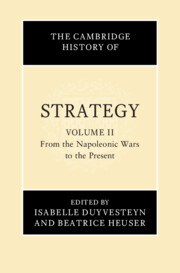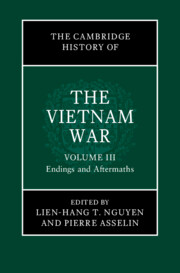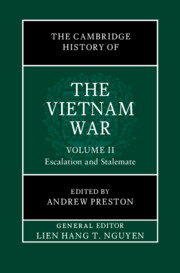Refine search
Actions for selected content:
15401 results in Military history
Introduction to Volume I
-
-
- Book:
- The Cambridge History of Strategy
- Published online:
- 06 January 2025
- Print publication:
- 09 January 2025, pp 1-20
-
- Chapter
- Export citation
11 - Byzantine Strategy (ad 630–1204)
-
-
- Book:
- The Cambridge History of Strategy
- Published online:
- 06 January 2025
- Print publication:
- 09 January 2025, pp 226-250
-
- Chapter
- Export citation
Summary of Volume I
-
-
- Book:
- The Cambridge History of Strategy
- Published online:
- 06 January 2025
- Print publication:
- 09 January 2025, pp 528-565
-
- Chapter
- Export citation
11 - The Second World War in Europe
-
-
- Book:
- The Cambridge History of Strategy
- Published online:
- 06 January 2025
- Print publication:
- 09 January 2025, pp 226-246
-
- Chapter
- Export citation
Further Reading
-
- Book:
- The Cambridge History of Strategy
- Published online:
- 06 January 2025
- Print publication:
- 09 January 2025, pp 547-558
-
- Chapter
- Export citation
8 - The Gupta Empire (ad 400–500)
-
-
- Book:
- The Cambridge History of Strategy
- Published online:
- 06 January 2025
- Print publication:
- 09 January 2025, pp 171-190
-
- Chapter
- Export citation
23 - The Three Gulf Wars and Iraq
-
-
- Book:
- The Cambridge History of Strategy
- Published online:
- 06 January 2025
- Print publication:
- 09 January 2025, pp 479-502
-
- Chapter
- Export citation
5 - Ancient Rome: Monarchy and Republic (753–27 bc)
-
-
- Book:
- The Cambridge History of Strategy
- Published online:
- 06 January 2025
- Print publication:
- 09 January 2025, pp 98-123
-
- Chapter
- Export citation
6 - China ad 180–1127
-
-
- Book:
- The Cambridge History of Strategy
- Published online:
- 06 January 2025
- Print publication:
- 09 January 2025, pp 124-143
-
- Chapter
- Export citation
19 - The India–Pakistan Confrontations
-
-
- Book:
- The Cambridge History of Strategy
- Published online:
- 06 January 2025
- Print publication:
- 09 January 2025, pp 387-410
-
- Chapter
- Export citation
4 - The American Civil War
-
-
- Book:
- The Cambridge History of Strategy
- Published online:
- 06 January 2025
- Print publication:
- 09 January 2025, pp 79-98
-
- Chapter
- Export citation
Dedication
-
- Book:
- The Cambridge History of Strategy
- Published online:
- 06 January 2025
- Print publication:
- 09 January 2025, pp vii-viii
-
- Chapter
- Export citation
22 - Naval Strategies
-
-
- Book:
- The Cambridge History of Strategy
- Published online:
- 06 January 2025
- Print publication:
- 09 January 2025, pp 448-463
-
- Chapter
- Export citation
4 - Philip II, Alexander III and the Macedonian Empire
-
-
- Book:
- The Cambridge History of Strategy
- Published online:
- 06 January 2025
- Print publication:
- 09 January 2025, pp 73-97
-
- Chapter
- Export citation

The Cambridge History of Strategy
-
- Published online:
- 06 January 2025
- Print publication:
- 09 January 2025

The Cambridge History of Strategy
-
- Published online:
- 06 January 2025
- Print publication:
- 09 January 2025

The Company Fortress
- Military Engineering and the Dutch East India Company in South Asia, 1638-1795
-
- Published by:
- Amsterdam University Press
- Published online:
- 04 January 2025
- Print publication:
- 11 March 2020
-
- Book
- Export citation

The Cambridge History of the Vietnam War
-
- Published online:
- 02 January 2025
- Print publication:
- 28 November 2024

The Cambridge History of the Vietnam War
-
- Published online:
- 02 January 2025
- Print publication:
- 28 November 2024

The Cambridge History of the Vietnam War
-
- Published online:
- 02 January 2025
- Print publication:
- 28 November 2024
